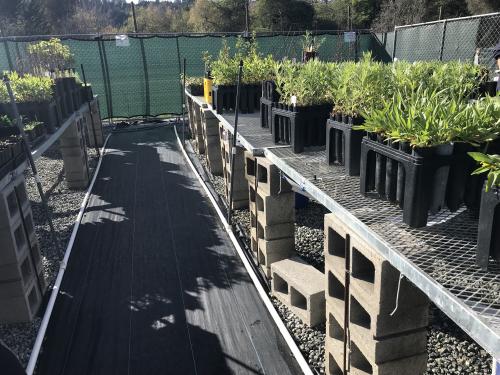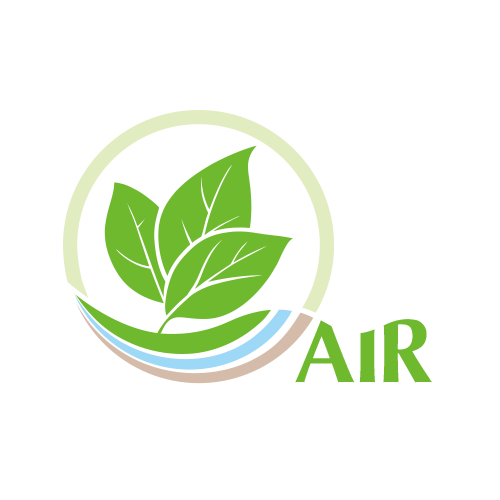Producing nursery plants free of soilborne Phytophthora

All of the clean nursery production best management practices (NPBMPs) have their foundation in a few basic concepts and rules of thumb summarized as Start Clean, Stay Clean.
The NPBMPs are simply applications of these rules to specific situations encountered in the plant production process. Because it is not possible to anticipate every possible situation in every nursery, lists of BMPs can have gaps: they may not explicitly cover a particular situation. However, if all nursery workers understand and consistently apply the basic concepts and rules of thumb noted below, they will be able to make informed decisions that are consistent with the NPBMPs and keep Phytophthora out of the production system .
Basic Concepts: What is Clean, What is Not
A. Contamination by microorganisms like Phytophthora cannot be seen. For day to day operations, assume that Phytophthora can be introduced anytime that a clean surface or material comes in contact with something that is contaminated.
B. Clean vs. Contaminated. For the purposes of producing Phytophthora-free nursery stock, the nursery system can be divided up as follows:
Basic Concepts: Clean vs Contaminated (Table 1)
| Clean | No Phytophthora present |
| Includes: |
|
| Contaminated | Could have Phytophthora present; should be treated as if it is present |
| Includes: | Almost everything else. In particular, any non-sanitized surface, especially the ground and reused containers; untreated water from surface sources; plant material not produced and maintained under the NPBMPs; container mixes or components (e.g., sand, compost, forest products, and peat moss) that have not been heat-treated. |
Rules of Thumb: Six basic rules underlying phytosanitary practices in the nursery Phytophthora best management practices (NPBMPs) (Table 2)
| Rule | Comments | |
| 1. | Clean + clean = clean. | If all inputs (plant tissues, container mix, pots, water) are clean and there is no contamination during production, the plants will remain clean. |
| 2. | Clean + contaminated = contaminated. | Clean items should never be allowed to contact contaminated materials. |
| 3. | Contaminated plants stay contaminated. | Once contaminated, live nursery plants cannot be made clean again. |
| 4. | If unsure, assume it is contaminated. | Any tool, surface (including benches, hands, and gloves), or input (plant materials, container mix, pots, water) should be considered contaminated unless you know or have documentation that it was sanitized or treated to kill Phytophthora and was not subsequently contaminated. |
| 5. | The ground is always contaminated. | The ground surface and any water in contact with it should always be considered to be contaminated. |
| 6. | Contamination spreads with water splash. | Clean plants or other materials that receive water splash from contaminated plants or surfaces can become contaminated. Water splash from rainfall-sized droplets in still air can reach a height of about 0.6 m (2 ft) and can spread laterally up to about 1.5 m (5 ft). Splash dispersal distances can be greater under windy conditions or with larger drops (e.g., runoff) or if generated by water under pressure (e.g., hose nozzle) or mechanical forces (e.g., splash caused by vehicle). Note that splashed water droplets can move both spores present in water and particles of infested soil and debris. |
Soilborne vs. Aerially-dispersed Pathogens
These rules of thumb apply to soilborne Phytophthora species and some other soilborne plant pathogens. Although soilborne Phytophthora species can be effectively excluded by following the rules of thumb and NPBMPs, plant pathogens that can spread aerially via dry spores (e.g., powdery mildews) cannot necessarily be excluded from nursery environments.
Some Phytophthora species are primarily airborne, typically only under wet conditions, and primarily cause foliar infections. These include species such as P. ramorum, the sudden oak death pathogen. For P. ramorum and some other similar species that are primarily splash-dispersed foliar pathogens, airborne spores (mostly in small water droplets) can be introduced into the nursery from nearby infected native or planted hosts. Most of the risk is associated with hosts that are within the range of wind-blown water splash from leaf surfaces, so the risk is low at distances of more than about 10 m (30 ft) or more. The NPBMPs do not specifically address exclusion of P. ramorum and similar aerially-dispersed Phytophthora species.
Dry airborne transport of soilborne Phytophthora spores and infested debris is very uncommon and limited to particular situations. For instance, material from a large cull pile of infested debris could be blown by high winds into nursery areas. However, this type of situation should not occur in nurseries that are complying with the NPBMPs. Consequently, dry deposition of soilborne Phytophthora inoculum is not normally a significant risk in NPBMP-compliant nurseries.
Credit: Tedmund J. Swiecki and Elizabeth Bernhardt, Phytosphere Research 9/2/2022
